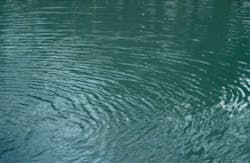Rain for Rent helps divert contaminated water from entering San Francisco Bay
BAKERSFIELD, Calif. — Rain for Rent, a provider of temporary liquid handling solutions, tackles unique liquid challenges every day. However, it’s not every day the engineering team is required to design and deploy a custom containment solution 175 feet in the air above the San Francisco Bay on what will be the largest self-anchored suspension bridge in the world, according to a press release.
Hampered by delays since the project began in 2002, the San Francisco-Oakland Bay Bridge is undergoing a seismic retrofit to bring it in line with transportation safety standards after it suffered significant damage in the 1989 Loma Prieta earthquake.
In preparation for a complex bolt repair that required drilling into the concrete structure, the bridge contractor needed to find a way to safely disperse the water necessary for cooling during the drilling process.
Unable to release this water into the Bay because of its high pH levels and sediment content, the contractor needed a liquid handling partner with the resources to capture and transport the water from this confined and uniquely positioned jobsite.
An urgent call brought Rain for Rent’s local engineering team to the site to assess the job requirements. “We were told there was zero margin for error,” said Kyle Van Fleet, Rain for Rent project engineer. “Every drop of water had to be captured, contained and diverted off the bridge for transportation, and once the drilling started, stopping was not an option.”
After constructing a steel gutter to capture the water under the drilling site, Rain for Rent ran a vertical pipe down 160 feet to direct the water into tanks placed on the floating pier end caps below.
For additional protection against leakage, Spillguards — one-piece temporary containment berms — were installed under the tanks.
Upon project completion, the water will be pumped from the tanks on the bridge to a set of tanks on a barge for transportation to the Port of Oakland for treatment and sanitary disposal.
